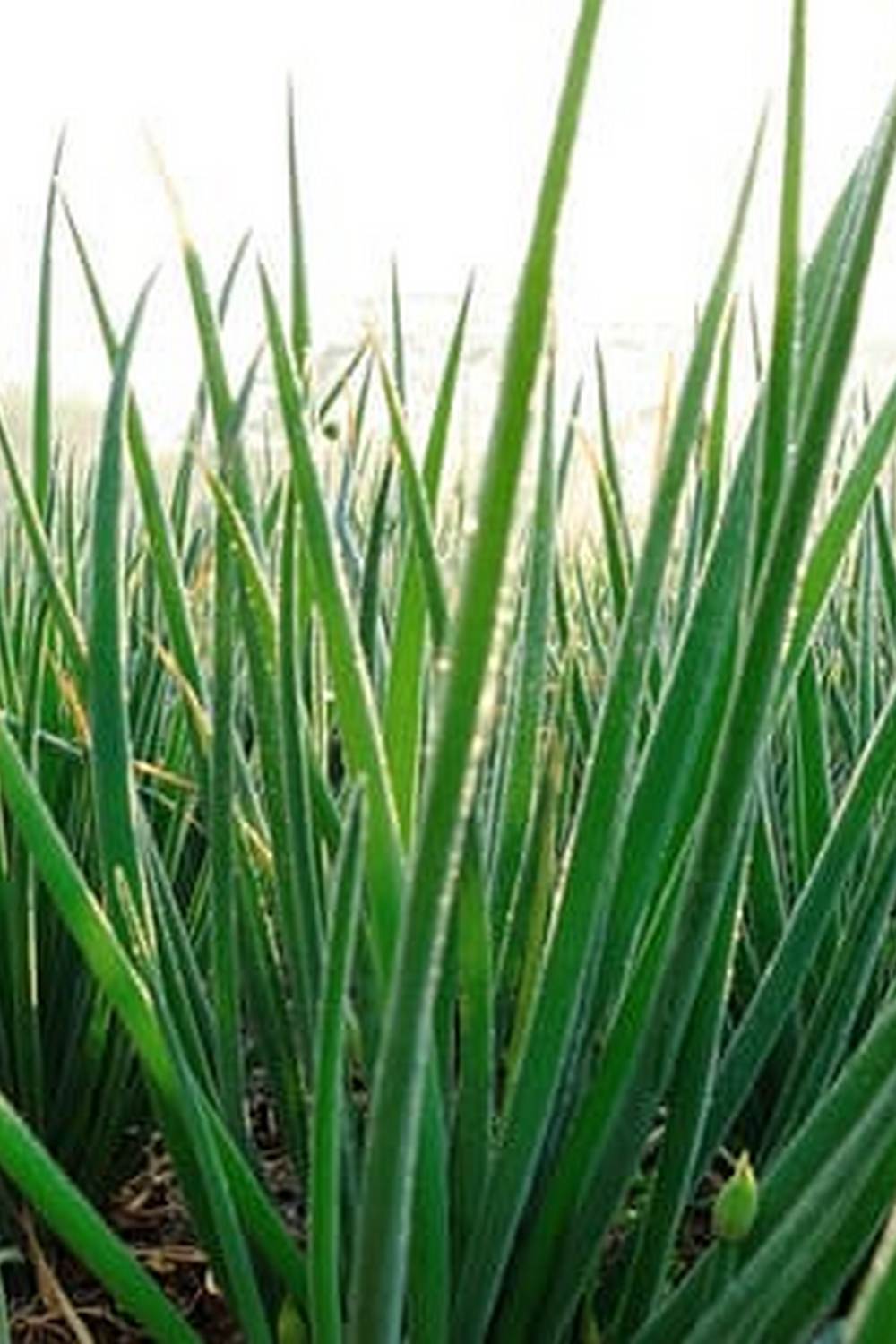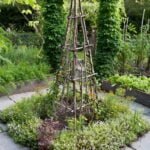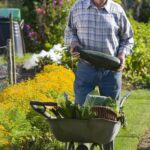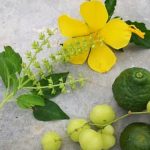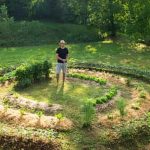Southwest fruit and vegetable gardening allows enthusiasts in this region to enjoy a bountiful harvest of fresh produce tailored to the unique climate of the Southwest. From arid deserts to high altitudes, this area presents its own set of challenges and opportunities for gardeners. By understanding the specific needs of plants that thrive in this environment, individuals can cultivate a successful garden filled with delicious fruits and vegetables.
Choosing the right plants is crucial for a flourishing Southwest garden. Varieties that are drought-tolerant, heat-resistant, and able to handle alkaline soils are key for success. In addition, understanding the importance of soil preparation and amendments specific to this region will help ensure optimal growth and productivity in your garden. With proper care and attention to these factors, gardeners can create a thriving oasis in even the most challenging Southwest environments.
Watering techniques play a vital role in sustaining a healthy garden in the Southwest. The scarcity of water in this region necessitates efficient practices such as drip irrigation systems and mulching to conserve moisture and reduce water waste.
By incorporating these strategies into your gardening routine, you can effectively manage water resources while promoting strong growth in your fruits and vegetables. With the right tools, knowledge, and dedication, Southwest fruit and vegetable gardening can be a rewarding experience for any enthusiast looking to embrace the beauty of sustainable gardening practices.
Choosing the Right Plants for the Southwest Climate
When it comes to Southwest fruit and vegetable gardening, choosing the right plants for the specific climate of the region is crucial for a successful harvest. The hot, arid climate of the Southwest presents unique challenges that not all plants can thrive in. However, there are several fruits and vegetables that are well-suited for this environment and can flourish with proper care.
One of the key considerations when selecting plants for a Southwest garden is their heat tolerance. Plants such as tomatoes, peppers, eggplants, and okra are well-adapted to the high temperatures commonly found in this region. These heat-loving plants can withstand the intense sun and heat of the Southwest summer and still produce a bountiful harvest.
Another important factor to keep in mind when choosing plants for a Southwest fruit and vegetable garden is water requirements. Drought-tolerant varieties such as cacti, succulents, beans, squash, and melons are ideal choices for conserving water while still producing delicious produce. By selecting plants that are well-suited to the arid conditions of the Southwest, gardeners can ensure a thriving garden with minimal water usage.
| Plants | Characteristics |
|---|---|
| Tomatoes | Heat-tolerant; requires moderate watering |
| Cacti | Drought-tolerant; minimal watering needed |
| Peppers | Heat-tolerant; thrives in sunny conditions |
Importance of Soil Preparation and Amendments in Southwest Gardening
Southwest fruit and vegetable gardening enthusiasts understand the vital role that soil preparation and amendments play in the success of their plants. The arid climate and alkaline soils prevalent in the Southwest present unique challenges for gardeners looking to cultivate a bountiful harvest. Therefore, taking the time to properly prepare and amend the soil is crucial for ensuring optimal plant growth and yield.
Testing Your Soil
Before starting your Southwest fruit and vegetable garden, it is essential to test your soil to determine its pH level and nutrient content. Most crops thrive in slightly acidic soil with a pH range of 6.0-7.0.
If your soil is too alkaline, adding amendments such as sulfur or compost can help lower the pH level. Additionally, testing for essential nutrients like nitrogen, phosphorus, and potassium can guide you in selecting the right fertilizers or organic matter to supplement your soil.
Amending the Soil
Once you have assessed your soil’s condition, it’s time to amend it accordingly. Adding organic matter like compost, aged manure, or peat moss can improve water retention, drainage, and nutrient levels in the soil. Vermicompost (worm castings) is another excellent amendment option that boosts microbial activity and enhances plant growth. By incorporating these amendments into your garden beds before planting, you provide your fruits and vegetables with a healthy foundation for robust growth.
Maintaining Soil Health
In addition to initial soil preparation, maintaining soil health throughout the growing season is essential for long-term success in Southwest fruit and vegetable gardening. Mulching around plants helps conserve moisture, suppress weeds, and regulate soil temperature-especially beneficial during hot Southwestern summers.
Regularly aerating the soil with a garden fork or tiller can improve drainage and prevent compaction. With proper attention to soil preparation and amendments, Southwest gardeners can create a thriving environment for their beloved crops to flourish year after year.
Watering Techniques and Practices for Southwest Gardens
When it comes to southwest fruit and vegetable gardening, proper watering techniques are crucial for successful plant growth in the arid climate of the region. Water is a precious resource, and using it efficiently in your garden will not only conserve water but also promote healthy plants. Here are some watering tips and practices to help you maintain a thriving garden in the southwest:
- Use drip irrigation systems: Drip irrigation delivers water directly to the roots of plants, reducing evaporation and minimizing water waste. This method is ideal for southwest gardens as it ensures that plants receive a consistent supply of moisture without overwatering.
- Water deeply and infrequently: In the dry climate of the southwest, plants need deep root systems to access moisture from lower soil levels. Instead of frequent shallow watering, water your garden deeply but less frequently to encourage strong root growth.
- Invest in a moisture meter: Monitoring soil moisture levels is essential in southwest gardening. A moisture meter can help you determine when to water your plants by indicating whether the soil is dry or moist at different depths.
Additionally, consider mulching your garden beds with organic materials such as straw or wood chips to retain soil moisture and prevent evaporation. Mulching also helps regulate soil temperature, reduce weed growth, and improve overall soil health in your southwest garden. By implementing these watering techniques and practices, you can ensure that your fruits and vegetables thrive despite the arid conditions of the region.
Tools and Equipment Needed for Successful Southwest Gardening
Gardening in the Southwest can be a rewarding experience, but it does require the right tools and equipment to ensure success. Here are some essential items you’ll need to have on hand for your Southwest fruit and vegetable garden:
1. Quality Garden Gloves: Protect your hands from thorns, sharp edges, and rough textures while working in your garden by investing in a good pair of gardening gloves.
2. Hori-Hori Knife: This versatile tool is perfect for cutting roots, planting bulbs, weeding, and dividing perennials. Its sharp blade and rugged construction make it a must-have for any Southwest gardener.
3. Drip Irrigation System: Since water conservation is crucial in the arid Southwest climate, a drip irrigation system can help you deliver water directly to the roots of your plants while minimizing waste.
4. Hand Trowel and Transplanting Spade: These hand tools are essential for planting seedlings, digging small holes, and transplanting young plants with care.
5. Pruning Shears: Keep your plants healthy and productive by regularly pruning dead or diseased branches. A sharp pair of pruning shears will make this task easier and more effective.
Having the right tools at your disposal can make all the difference in the success of your Southwest fruit and vegetable garden. By investing in quality equipment and keeping them well-maintained, you’ll be better equipped to handle the unique challenges of gardening in this region.
Dealing With Pests and Diseases in Southwest Fruit and Vegetable Gardens
When it comes to maintaining a successful fruit and vegetable garden in the Southwest, one of the biggest challenges that gardeners face is dealing with pests and diseases. The unique climate of the region can create ideal conditions for a variety of unwanted visitors to invade your garden and harm your plants. It is essential to stay vigilant and proactive in order to protect your crops and ensure a bountiful harvest.
Identifying Common Pests
In the Southwest, some of the most common pests that gardeners may encounter include aphids, whiteflies, spider mites, and caterpillars. These pests can quickly infest your plants, sucking sap or chewing on leaves, which can weaken the plant and stunt its growth. Regularly inspecting your plants for signs of pest activity such as holes in leaves or yellowing foliage can help you identify problems early on.
Organic Pest Control Methods
To combat pests without relying on harsh chemicals that can harm beneficial insects and pollinators, consider using organic pest control methods in your garden. Neem oil, insecticidal soap, diatomaceous earth, and companion planting are all effective ways to manage pest populations without causing harm to your plants or the environment.
Introducing natural predators like ladybugs or lacewings can also help keep pest populations in check. Additionally, practicing good garden hygiene by removing debris where pests may hide can prevent infestations from taking hold.
Preventing and Managing Diseases
In addition to pests, diseases like powdery mildew, blossom end rot, and various fungal infections can pose a threat to your fruit and vegetable plants in the Southwest. Proper irrigation practices that avoid overhead watering can help prevent the spread of disease by minimizing moisture on plant leaves.
Applying fungicides or copper sprays as preventative measures during key times in the growing season can also help protect your plants from certain diseases. It’s crucial to promptly remove any infected plant material to prevent diseases from spreading further throughout your garden.
Tips for Maximizing Limited Space in Southwest Gardening
One of the biggest challenges faced by urban gardeners in the Southwest is maximizing limited space. With soaring real estate prices and smaller yards, it can be a struggle to find room for all the fruits and vegetables you want to grow. However, with some creative planning and smart techniques, you can make the most of your space and have a bountiful harvest.
One effective way to maximize limited space in Southwest fruit and vegetable gardening is by utilizing vertical gardening methods. Vertical gardening involves growing plants upwards instead of outwards, making use of trellises, arbors, and hanging baskets. This technique not only saves space but also allows for better air circulation and sunlight exposure for your plants. Consider planting vining vegetables like cucumbers, beans, or even small melons that can climb up trellises or fences.
Another strategy for maximizing limited space is to utilize companion planting principles. By planting compatible crops together, you can save space and increase yields. For example, planting lettuce around taller plants like tomatoes or peppers can help provide shade and moisture retention for the lettuce while utilizing the vertical space available.
Additionally, consider interplanting quick-growing crops like radishes or spinach between slower-growing ones to make use of every inch of soil. Companion planting not only maximizes your garden space but also helps deter pests and promote healthier growth overall.
Lastly, don’t underestimate the power of container gardening in Southwest fruit and vegetable gardening. Containers offer flexibility in terms of placement and allow you to grow a variety of plants in a small area. Choose compact varieties of your favorite fruits and vegetables that are well-suited to container growing, such as patio tomatoes, dwarf peppers, or bush beans.
Be sure to use well-draining soil and provide adequate water and sunlight for your container plants to thrive in limited spaces such as balconies or patios. With proper planning and care, even small urban spaces can yield a fruitful harvest in Southwest fruit and vegetable gardening.
Harvesting and Preserving Your Southwest Garden Produce
Harvesting your fruits and vegetables at the right time is crucial for ensuring the best flavor and nutritional value. In the Southwest region, where temperatures can soar during the summer months, it’s important to harvest early in the morning or late in the evening to avoid heat stress on freshly picked produce. This practice helps maintain the freshness of your harvest, especially with delicate crops like berries and leafy greens.
When it comes to preserving your Southwest garden produce, there are several methods you can use to enjoy your fruits and vegetables year-round. Canning is a popular option for preserving items like tomatoes, peppers, and fruits such as peaches and apricots. Freezing is another great way to preserve produce like green beans, berries, and corn. Dehydrating is ideal for fruits such as apples and pears, as well as hot peppers for future use in cooking.
Properly storing your preserved goods is equally important in maintaining their quality. Labeling your jars with the date of preservation helps keep track of freshness. Store canned goods in a cool, dark place away from direct sunlight. Frozen produce should be kept at a steady temperature of 0°F (-18°C) or below. Dehydrated foods should be stored in airtight containers in a dry location to prevent moisture from affecting their shelf life.
| Preservation Method | Produce Examples |
|---|---|
| Canning | Tomatoes, Peppers, Peaches |
| Freezing | Green Beans, Berries, Corn |
| Dehydrating | Apples, Pears, Hot Peppers |
Community Resources and Events for Southwest Fruit and Vegetable Gardeners
In the Southwest, there are numerous community resources and events available to support fruit and vegetable gardeners in their endeavors. One valuable resource is local gardening clubs or societies that provide a platform for gardeners to connect, share knowledge, and learn from each other’s experiences. These groups often organize workshops, meetings, and events focused on various aspects of gardening, including seed saving, composting, and sustainable practices specific to the Southwest climate.
Another essential community resource for Southwest fruit and vegetable gardeners is cooperatives or community gardens. These shared spaces offer individuals the opportunity to grow their own produce while also fostering a sense of community among participants. Community gardens often provide access to tools, resources, and expertise that can be beneficial for novice gardeners looking to expand their skills and knowledge in Southwest fruit and vegetable gardening. Additionally, these spaces promote sustainability by utilizing shared resources efficiently.
Furthermore, attending local farmer’s markets or agricultural fairs can be an excellent way for Southwest fruit and vegetable gardeners to connect with other growers in the region, as well as consumers interested in fresh produce. These events not only provide a platform for selling or exchanging surplus produce but also allow gardeners to showcase their hard work and dedication.
Additionally, farmer’s markets often host educational workshops, cooking demonstrations using locally grown ingredients, and other activities that can inspire gardeners to continue learning and experimenting with new plant varieties suitable for the Southwest climate. By taking advantage of these community resources and events, Southwest fruit and vegetable gardeners can enhance their gardening experience while contributing to the overall health of their local food system.
Conclusion and Inspiration for Your Southwest Fruit and Vegetable Garden Success
In conclusion, Southwest fruit and vegetable gardening offers a unique set of challenges but also abundant rewards for those willing to put in the effort. By choosing the right plants suited for the region’s climate, preparing the soil with necessary amendments, employing proper watering techniques, and using the right tools and equipment, gardeners can set themselves up for success. Dealing with pests and diseases may require diligence, but there are many resources available to help mitigate these issues.
Maximizing limited space in Southwest gardening requires some creativity and strategic planning, but it is definitely achievable with the right tips and tricks. Harvesting your produce can be a gratifying experience, especially when you get to enjoy the fruits of your labor or preserve them for future use. Additionally, getting involved in community resources and events can provide valuable support, information exchange, and a sense of camaraderie among fellow Southwest fruit and vegetable gardeners.
In essence, whether you are a beginner or a seasoned gardener, embarking on a journey into Southwest fruit and vegetable gardening can be both fulfilling and inspiring. With dedication, knowledge, and a passion for growing your own food, you can create a thriving garden that not only sustains you but also connects you to nature in a meaningful way. So roll up your sleeves, dig in the dirt, and let your Southwest garden flourish with abundance.

If you’re looking to get into vegetable gardening, or are just looking for some tips on how to make your current garden better, then you’ve come to the right place! My name is Ethel and I have been gardening for years. In this blog, I’m going to share with you some of my best tips on how to create a successful vegetable garden.

